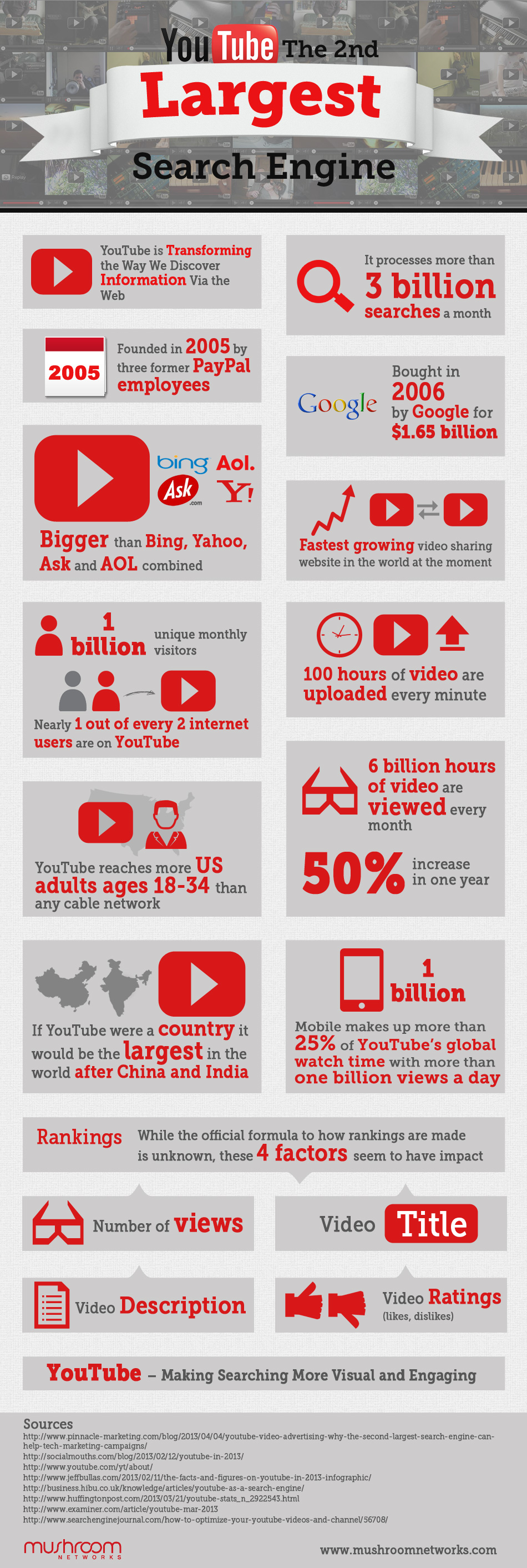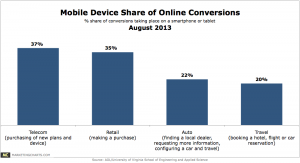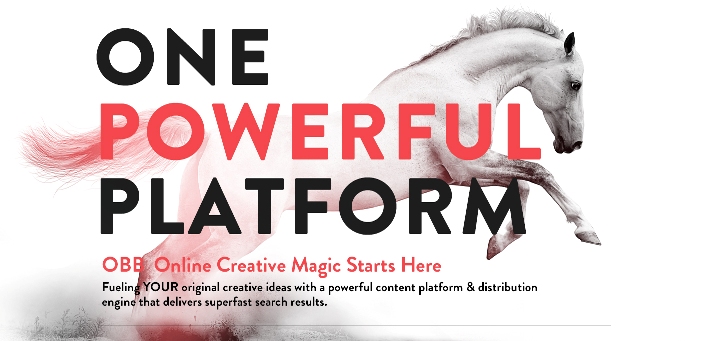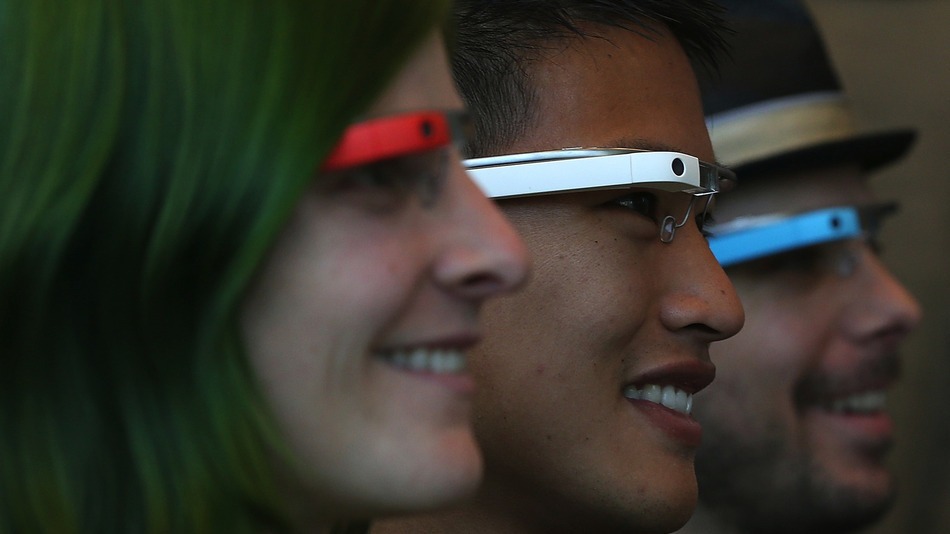Understanding the demographics of social media users is critical to effective, well-targeted social media marketing.
Luckily, a new infographic from DocStoc and the Pew Research Center is bestowing on marketers today a wealth of invaluable information that marketers can use.
From Pinterest’s primary appeal to rural residents, to Instagram’s resounding appeal to urban residents and 18-29 year olds, it’s all here.
To learn more about the demographics driving today’s top social networks, check out the visual shared below.
By Michael
DealerNet Services
 They may be the last age group to join in, but you can no longer say that baby boomers and seniors aren’t embracing technology.
They may be the last age group to join in, but you can no longer say that baby boomers and seniors aren’t embracing technology.In the past four years, the percentage of people age 65 and older who say they use social-networking sites tripled to 43%, from 13% in 2009, according to a recent survey by thePew Research Center.
And 60% of 50- to 64-year-olds said they are on a social-networking site, according to the survey, which asked 1,895 adult Internet users about their online practices.
Those figures still pale in comparison to younger Americans: 89% of people aged 18 to 29 said they use social-networking sites, as did 78% of 30- to 49-year-olds.
And it’s not as though the survey’s findings reveal an obsession for social-media among older folks. Yes, a good portion of mature Americans are online and they’re using Facebook—but that’s about it in terms of social media.
“To the extent that people in that 65-and-up group are using social-networking sites, almost all of them use Facebook. Very, very few of them use something in addition to that,†said Aaron Smith, a senior researcher at Pew Research Center and a co-author of the report.
They’re joining in greater numbers “for the same reasons everyone else is getting on it,†Smith said. “Connections to the people they care about, whether those are family members or other loved ones, as well as to people who share similar interests, similar hobbies.â€
The embrace of social media often is driven by one’s friends and family joining.
“Generally, when we ask people why they don’t go online or why they don’t have a cellphone, it’s a perceived lack of relevance. That idea that, ‘this is a waste of time, there’s nothing here of value to me,’†Smith said (he added that, for some others, there might be financial or physical limitations).
“That’s particularly true for people who have lived perfectly happy, successful and fulfilling lives for decades without a lot of this stuff,†he said.
The question posed to survey respondents was: “Do you ever use the Internet to use a social-networking site like Facebook, LinkedIn or Google Plus?†(In previous iterations of the 8-year-old survey, the question included MySpace and Friendster. Remember those?)
The survey also found that Twitter is not yet a go-to site among older folks. The survey found that just 5% of people aged 65 and up said they use Twitter, as did 13% of 50- to 64-year-olds, 17% of 30- to 49-year-olds and 30% of 18- to 29-year-olds.
Job seeker? Facebook alone won’t cut it
If you’re a boomer job seeker, using Facebook is not enough to overcome some employers’ perception that older workers are not tech savvy.
Abby Kohut, a career consultant and author, said she urges job seekers to demonstrate that they’re up-to-date on technology.
By Andrea Coombes
DealerNet Services

The internet is now able to reach a broader and younger audience than the high street ever was, with 69% of people aged between 12 and 17 reported to have a computer, many of whom will be strongly influenced by the rippling effect of their friends on social media.
The latest Mobile Youth report revealed that 50% of young people recommend a brand because they have had a positive experience with it, and that 88% of all positive recommendations for a brand are generated by fans who make up 10% of the brand's customers.
Young people have such a grasp of technology that it's natural to them – it's a gateway to exploring their interests and sharing their lives. So they're brand-aware and tech-literate, but how do you stay cool today with a young person whose trends and tastes are so fickle? Having helped companies do this for over 20 years, here are my top five tips for better engaging the youth of today.
1 It's all about big data and small data
The more people use the internet, the more brands can potentially learn about the activity of their consumers – and the more they can tailor their offer to suit them. When it comes to brands, it's all about big data and small data: being able to gather as much data as possible and filter it in such a way that the information becomes meaningful and valuable, so that we can learn from interactions with our customers and make improvements in the ways we service them.
We need to use this data to create an age-appropriate online presence. Just as data feeds a more bespoke marketing approach, you need to break your targeting at different levels. Many classify tweens and teens in one large cluster, but there is a lot of emotional, social and physical growing in these years. What is right for an 11-year-old girl is different from that for a 13-year-old boy.
2 Be in association with…
Celebrities set the pace for staying on top of the latest fashions. Brands piggyback on these fashionistas to get to the consumer and convince them they, too, can get the look. Use them to boost your brand's youth appeal.
But, if you don't have easy access to Lady GaGa, take a brand of the moment to achieve the same effect. Your brand might be a massive juggernaut in terms of size and market share, but has lost its coolness. Link with another brand to bring it back. This is how the brand licensing market has got so powerful and you only have to look at brand associations for festivals such as Coachella (H&M, Heineken, Red Bull and Fruttare) to see how cool associations can sell products.
3 Create the right digital channels but also look at offline
As James Withey, head of brand insight at Precise, says: "Make everyday online encounters entertaining for kids. So the launch of a new quirky toy in a cereal box might be more successful in generating online word-of-mouth mentions than major product launches or ad campaigns."
If you want to reach out to a younger audience, you need to remember that they are still kids at heart and as such give them something entertaining to do, such as creating their own online avatar, which they can use to try out their own fashion tastes and share with their friends.
4 Move your brand with your core customer base
If your customer base is 13 years old and you find it is becoming younger, create a brand extension aimed at older teens that allows you to keep your existing customer base but gives those who might be tiring of it a new dimension to be interested in.
We all know Mark Zuckerberg and fellow students created Facebook as a social network for them while at Harvard. The latest statistics claim that there are now 1.06 billion monthly users, which means that, far from a communication medium for young people, it has become a mainstream tool for those wanting to communicate. In fact, 65% of Facebook users are over 35. However, where Facebook has been clever is by introducing instant messaging, which young people are more likely to use.
5 Give young people a voice and make sure it matters
Brands that really listen to their customers tend to be the ones their customers want to buy from. Social media means people are used to having a voice and using it from a young age. They are used to airing their opinions not only to their friends, but their friends' friends and all their followers. They expect those opinions to be taken seriously and are often happy to have their opinions out in the air to be debated and discussed.
Brands that ask for and use these opinions –which flavour of Walkers Crisps to launch or what name to choose for the latest X Factor band, for example – are the ones that bring discussion out of the brand arena and make customers brand ambassadors.
Early adoption means we need to be more savvy as brand guardians. As our target audiences become more sophisticated at a younger age, we need to stay one step ahead of them, understanding what they like and don't like and what they interact with.
Written byMax Eaglen
DealerNet Services
A Business Owner's Guide To Better Lead Generation in 3 Steps
Tags: The way your buyer's purchase and your competitors are going to market is changing rapidly and fundamentally. Many business owners are finding their tried and trusted lead generation techniques and tactics are failing to yield sufficient results.
The way your buyer's purchase and your competitors are going to market is changing rapidly and fundamentally. Many business owners are finding their tried and trusted lead generation techniques and tactics are failing to yield sufficient results.But knowing you need to change and knowing how to change and specifically how MUCH to change sits at the heart of the challenge.
Understanding the buyer's journey lies at the centre of good lead generation practices. Marketers should allow the journey their buyers go on...
- from uninterested and unaware in their products or services,Â
- to defining their problems and their need,
- to expressing interest in your solutions,
- to purchasing and becoming a loyal customer
Funnel maths - Measuring Your Lead Generation EffectivenessTraditionally, one of the major issues business owners face is not being able to measure the financial return on their marketing investments. There was no way to gauge the real impact on revenue of say, print advertising or direct mail. Even knowing some data, such as email open rates isn't sufficient to understand the dollar return on that particular marketing investment.
However, a new era is upon us. An era where “Smart Marketersâ€, armed with the right tools, have the ability to calculate real marketing ROI. We refer to this as "knowing your funnel maths.â€
Say you have 1000 visitors to your website in a given month (ie the top of the funnel). You target those visitors and turn them into leads by providing content that best suits their needs. Of those initial 1000 visitors, 50 of them become leads and enter your lead nururing campiagn (middle of the funnel). Of these 50 leads, 8Â of them become sales ready leads, of which 2 of them become customers (bottom of the funnel.) The two delas are worth $5000Â in new revenue to your business.
Smart lead generation is knowing the "leakage rate" of each stage in their funnel(how many propects you lose along the way) knowing the lag time from first engagement with prospects to the time they become a loyal customer. Armed with this valuable information, together with their current and planned revenue goals and average selling price,organisations can model their lead generation funnel accordingly.
Why is this important? Because it means business owners and their marketers now know the velocity they need to run their funnel to meet their revenue goals.
They know how many visitors and contacts they need at the top of the funnel in order to drive revenue at the bottom of the funnel. Now that's smart!
Employ a digital, inbound marketing methodologyEmploying a lead generation strategy using digital or inbound marketing strategy saves business owners time and money. On average an inbound lead is 62% cheaper than an outbound generated lead.
Good inbound marketing attracts buyers to your site via carefully selected tactics that highlight the problems and challenges your buyers are facing in their business. Nurturing those leads using relevant targeted messages further deepens the engagement.
Now, instead of your sales team caught up cold calling or email spamming, they can establish and develop a credible and trustworthy relationship with buyers who are educated and motivated.
But perhaps the single biggest benefit of an inbound marketing approach is the ability to measure your lead generation funnel at every step of the process and then adapt your approach and retest to evaluate the success of the change. This incremental, iterative, adaptive approach yields much better and faster returns.
Use content to nurture your leadsNow we now know that people commence online searches and visit websites for a solution to a problem. What’s the most effective way to engage? Provide content such as an eBook, current industry trends or a more technical whitepaper. Nurture your lead through their buying process. If your prospect is “sitting on the fence†provide more relevant information such as product demonstrations, free trials and video testimonials to enhance your reliability whilst educating and informing buyers too.
According to Hubspot here's how your offer types change as the buying process progresses.
Â
- Your funnel maths
- Inbound marketing
- Content that speaks to buyers
Posted by Joe Fell
DealerNet Services
The online video sharing service, developed by a trio of former PayPal employees in February 2005, now allows users to upload, watch, and share videos to each other and to other websites, such as Facebook.
At present, the headquarters of YouTube is in San Bruno, California. It shows an extensive array of video content generated by users though HTML5 and AdobeFlash Video technologies. The typical uploaded contents are a movie and TV clips, music videos, video blogs, educational videos, and original videos.
YouTube was established by three former employees of e-commerce firm PayPal: Chad Hurley, Steve Chen, and Jawed Karim. Reports say Hurley and Chen coined the idea for YouTube in the early part of 2005, after they had a hard time to share videos taken from a dinner party at the San Francisco apartment of Chen.
Karim was not at the party and even denied it happened. Karim said the motivation to create YouTube was because of the 2004 Super Bowl incident, wherein the breast of Janet Jackson accidentally slipped in her performance on stage. He had a hard time to look for a video clip of the event online. He said this led to the idea of an online video sharing service. However, Hurley and Chen said the original development plan was to build a video version of Hot or Not, an online dating service.
Nearly all of the videos uploaded on the website are by individuals, even though YouTube partners, such as BBC, CBS, Hulu, Vevo, and other major organizations, provide their own videos on the site.
YouTube does not require users to register before they can watch videos, but the advantage for members is their unlimited number of video uploads. In addition, videos deemed potentially invasive or disturbing are accessible only to registered users 18 years old and above.
In 2006, Google bought YouTube for $1.65 billion and the company now functions as a subsidiary of the online advertising and search engine giant.
In November 2011, Google integrated its social networking site Google+ with YouTube and its web browser Google Chrome. The move allowed YouTube videos to be watched directly from Google+. A month after that, YouTube launched its new user interface, with video channels shown at the center of the homepage, the same way social networks present their news feed. In addition, a new version of the YouTube logo was used with a darker red color.
The title for the most viewed YouTube video is held by the music video of South Korean singer PSY with his song “Gangnam Style.†It was uploaded on July 2012 and surpassed the leading videos at the time to be the first YouTube video with 1 billion views on December 2012.
To highlight its achievements and statistics, Mushroom Networks has packed the most recent information about YouTube in an infographic.
By Francis Rey Balolong
DealerNet Services

This infographic identifies five different types of complainers and how you can help them.
By Blue
DealerNet Services

Mobile Devices Accounting For Almost One-Third of Online Conversations Across Major Verticles
Tags: A study of 100 million “conversion events†across 4 major verticals (telecom, retail, auto, and travel) and multiple devices – including mobile phones, desktop computers, and tablets – reveals that 31% of said conversions took place on a mobile device. The study, conducted by AOL in conjunction with the University of Virginia School of Engineering and Applied Sciences (SEAS), also finds that 65% of mobile conversions took place on a tablet.
A study of 100 million “conversion events†across 4 major verticals (telecom, retail, auto, and travel) and multiple devices – including mobile phones, desktop computers, and tablets – reveals that 31% of said conversions took place on a mobile device. The study, conducted by AOL in conjunction with the University of Virginia School of Engineering and Applied Sciences (SEAS), also finds that 65% of mobile conversions took place on a tablet.While Android and iOS devices each accounted for roughly 50% share of smartphone conversions, the iPad was the dominant tablet device, at 85% of conversions.
The proportion of conversions taking place on a mobile device has grown by 28% over the past year, according to the researchers.
Telecom appears to be the most heavily influenced vertical of the 4, with 37% of new plan and device purchases coming from a mobile device. Next up was retail, with 35% of purchases occurring on a smartphone or tablet. Auto (22%; referring to finding a local dealer, requesting more information, configuring a car, and travel) and travel (20%; referring to booking a hotel, flight, or car reservation) were relatively less influenced.
Consumers are now spending one-quarter of their digital time at home on their tablets or mobile phones, according to the study, and three-quarters of the mobile ad impressions tracked were viewed inside the home. While the researchers note that this “runs counter to the prevailing wisdom†that most mobile device use occurs outside the home, that view has been debunked several times, as discussed here.
About the Data:Â The data is based on 500 billion impressions served by AOL Networks during portions of 2012 and 2013.
by MarketingCharts staff
DealerNet Services
This isn’t the first time this kind of study has been done but this one has two things going for it. The first is that it is current. The second is that it comes from Pew, which we have found to be one of the truly unbiased research outfits in the market. Current and not being spun as some kind of PR is appealing to us.
First, a look at overall use of social networking by age.
Now let’s take a look at Twitter.
Â
Once again, is this data shocking? Not at all but it’s important to grasp who is using social networking so that it may be applied appropriately by marketers and others who are looking to reach specific groups with their message.
Were you surprised by these numbers? If so, what make you look twice? If not, what do you make of the findings?
By Frank Reed
DealerNet Services
Why Social Integration? The World Is Changing-Everything is connected
Tags: Everything IS Connected:Â
Everything IS Connected: The world is changing. Marketing is no longer defined by lip-service promotions. Instead consumers are flocking to the Internet, seeking information about their favorite brands and products. They want the immediacy of networking; they want the ease of web site posts; they want instant communication.Â
Â
And they’re willing to give their loyalties (as well as their dollars) to companies that offer these things through social integration.
Â
Â
It’s also connected to the way individuals shop.Â
Â
Consumers are now spending their time--and their money--online. They’re seeking out company web sites, utilizing social media as a way to learn and buy. It’s estimated that:
Â
71% of users rely on online information for all of their purchasing.
Â
79% of users seek out company social accounts (like Facebook or Twitter) to receive updates and incentives.
Â
81% of active social media users favor companies and products found in their networks.
Â
70% of active social media users do the majority of their shopping online.
Â
The statistics are startling--if only because they can no longer be ignored.Â
Â
Social integration is linked to consumer awareness. Companies that embrace networking, blogging and more become part of an ever-expanding circle of accounts. They are connected directly to the demographics they need, bringing traffic to their sites and sparking profits every quarter.
Â
A business that isn’t integrated is a business that’s losing money. One Big Broadcast helps to earn those dollars back.
 Social Integration: What One Big Broadcast OffersÂ
One Big Broadcast is a social media platform developed with propietary technology. It delivers complete social integration through techniques like:
Â
Scheduled Content
IMGY Galleries
Private Communities
Company Profiles
SEO-focused Blogging
And More
Â
The purpose of these tools is to fully embrace the power of social media. Relevant content is offered to networks and engines, dominating searches. Niche marketing, along with mobile options, attracts targeted audiences. A site is fully connected to the Internet... and that allows it to be fully connected to users.
Â
One Big Broadcast pushes brands to the forefront of social media, integrating them into the consciousness--and posting preferences--of consumers. Its cloud-powered console brings companies and clients together.Â
Â
And this is essential.
Â
Contact One Big Broadcast today to discover the media connection.
DealerNet Services
The Future Of Advertising: "Pay Per Gaze" Is Just The Beginning
Tags: Advertising is going to change more in the next 20 years than it has in the last 100. If you need proof of that, just look at the patent Google was granted Thursday for a Google Glass-based ad system.
Advertising is going to change more in the next 20 years than it has in the last 100. If you need proof of that, just look at the patent Google was granted Thursday for a Google Glass-based ad system.Dubbed "pay-per-gaze," the content would charge advertisers for the number of times someone literally looked at their ad. The concept is buried pages deep in a patent for a "gaze tracking technique ... implemented with a head-mounted gaze-tracking device that communicates with a server."
SEE ALSO:Â New Patent Hints at 'Pay-Per-Gaze' Advertising for Google Glass
It would likely make money hand over fist, and is clearly the main future-focused impetus for the patent. But it's far from the only one.
What is this head-mounted gaze-tracking device of which they speak? "Eyeglasses including side-arms that engage ears of the user, a nose bridge that engages a nose of the user, and lenses through which the user views the external scenes, wherein the scene images are captured in real-time," says the patent. It never uses the word Google Glass — but if someone can explain to me the difference between that device description and Google Glass, I'd love to hear it.
So to recap: the world's largest search engine was just granted a patent for the most sticky form of advertising possible — ads that literally flash in front of your eyes. Google gets paid when it can ascertain that your pupils pointed in that direction, and for how long. And all of this on the device it is currently seeding among the influencers of the tech community.
In other words, Google Glass is going to bring a whole new meaning to "made you look."
Phase Two:Â Pay-Per-EmotionNow it's Google, so they're likely to be smart and subtle about it. It'll start by offering an extra layer of reality-augmented ads when you're looking at specific Glass-friendly billboards. Hey, it was obviously an ad, and you looked at it, so you must be interested.
You know advertisers will pay for this sort of high-tech gimmick as an add-on to their campaign; it's an easy way to look hip and gain media coverage without spending all that much on the test-bed target audience.
At this point, depending on the reaction to phase one, local advertisers may get interested. You may start to see menus pop up in restaurant windows, and the restaurant pays if your eyes linger over a given menu item.
Either way, this is all just a prelude to phase two, in which the Google Glass camera will intensify its gaze on you.
Phase two, as described in the patent, will be pay-per-emotion. If the ad can make your eyes dilate — say, a picture of a particularly delicious slice of pizza in a restaurant window, or a racy Gap ad — the advertiser pays more.
"Pupil dilation can be correlated with emotional states, (e.g., surprise, interest, etc.)," the patent helpfully reminds us. And it's simplicity itself for a camera that's tracking your gaze to track the size of the gazing subject's eyes.
The Far Future of AdvertisingThis is exactly the sort of thing that made William Gibson quit writing science fiction. We seem to be entering an era where tastemakers are willingly accepting augmented advertising that is flashed on their eyeballs by the world's most technically advanced multinational. That's more cyberpunk than most cyberpunk.
So let's get ahead of the game and speculate in even more outlandish sci-fi ways that are already technically feasible. If Google Glass advertising is smart and successful enough, if it gently overcomes the creepiness factor with the glories of convenience, what next?
Well, we already have prototype devices that can read and translate your electromagnetic brainwaves, believe it or not; you can literally think instructions to them. You can be as precise as thinking of a particular number or letter, and the device can read them; this was shown in experiments as early as 2000.
SEE ALSO:Â Are Brain Waves and Heartbeats the Future of Passwords? [VIDEO]
The first time I tried one, in 2009 — the Epoc by Emotiv — it was a helmet-sized thing with plastic tendrils plugged into a PC. Within two years, such prototypes were the size of a headband and worked with your smartphone; after all, they're just readers of electromagnetic activity. I have no doubt Google Glass version 3.0 could do this with spectacle frames pressed to your temples.
The ultimate implementation of this for advertising, marketing and sales? Here's what occurred to me 13 years ago when I first read about those mind-reading number-and-letter experiments:just wait until credit card companies get hold of this. You'll be thinking your account numbers at advertising in no time.
SEE ALSO:Â Brain-Scanning Headphones Match Songs to Your Mood
Think about it, no pun intended. If you were really hungry, really wanted that pizza, and could order it automatically by simply by looking at it and thinking your credit card number, why wouldn't you?
This is where we really go down the rabbit hole of the future. Because if you only have to think your number at a picture, do checkouts vanish? Does every store become an automat?
Will people want to carry hefty shopping bags, or simply look at displays to have whatever they like overnighted to their homes? Will the malls of the future start to look like art galleries?
Is there ever going to be a technological line beyond which advertising won't go? Leave your predictions in the comments.
By Chris Taylor
DealerNet Services
CALENDAR
CATEGORIES
TAGS
TWITTER POSTS
CALENDAR
- powered by
- One Big Broadcast
- creative by
- WebStager
© 2025 One Big Broadcast | All rights reserved



